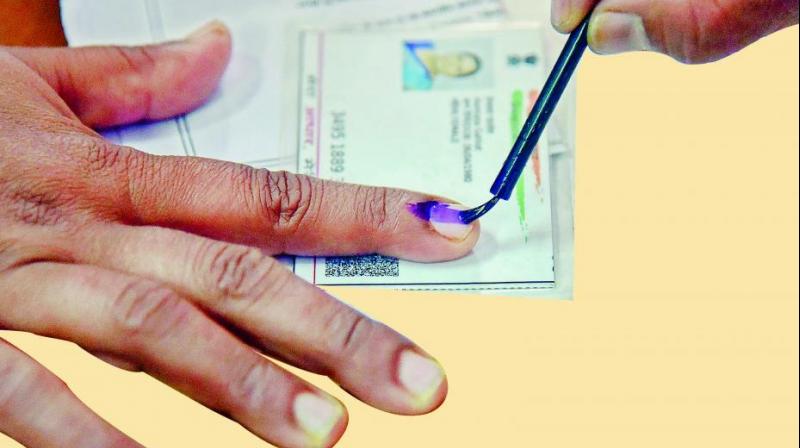Dilli Ka Babu: Big Bang lateral entry move
While nearly 6,000 candidates had applied for the posts, only 2 per cent of them qualified for the interview stage.

After pushing along for several months, the Modi sarkar’s move on lateral entry into government has finally become a reality. The government has selected nine private sector specialists for appointment to the post of joint secretary in the Government of India on a contract basis.
But still playing it safe, these appointments have to wait for clearance from the Election Commission.
The department of personnel and training is clearly not sticking its neck out given that the nation is in the midst of a general election.
Those selected are Amber Dubey (for civil aviation), Arun Goel (commerce), Rajeev Saksena (economic affairs), Sujit Kumar Bajpayee (environment, forest and climate change), Saurabh Mishra (financial services) and Dinesh Dayanand Jagdale (new and renewable energy). Suman Prasad Singh has been selected for appointment as joint secretary in the road transport and highways ministry, Bhushan Kumar in shipping and Kakoli Ghosh for agriculture, cooperation and farmers welfare.
The newly appointed joint secretaries include IIT, IIM and Oxford alumni who have worked with the United Nations and renowned multinational financial organisations.
Mr Saksena is a former banker who has worked at the Saarc Development Fund, Mr Dubey is an IIT-IIM alumnus who is a partner at KPMG, while Ms Ghosh holds a doctorate in plant sciences from Oxford University.
The lateral entry mode, which relates to the appointment of specialists from the private sector in government, is an ambitious step of the Modi government to bring in fresh talent in bureaucracy.
Usually, the posts of joint secretaries are manned by IAS, IPS, IFoS and IRS officers who are selected through a three-step process undertaken by the Union Public Service Commission (UPSC). In June last year, however, the department of personnel and training (DoPT) had invited applications for 10 joint secretary-rank posts through the lateral entry mode.
While nearly 6,000 candidates had applied for the posts, only 2 per cent of them qualified for the interview stage.
The long delay, sources say, was due to the government having to surmount opposition from entrenched babus who fear encroachment on their turf. The entry of domain experts from the private sector would mean relinquishing their carefully protected dominance of government administration.
The announcement of these appointments has, predictably, set tongues wagging. The civil service babus are expressing worries about “conflict of interest” due to the new appointees’ experience in the private sector during which they were advising private companies while liaising with government officials.
The other chief concern, it emerges, is that the appointments would undercut the heavily defined hierarchy in the administration, since some of the appointees are felt to be “too junior” for such key decision-making positions.
It is clear that the appointees have joined an “elite” club, but where despite their professional expertise, they will still need to earn their spurs! Fortunately, unlike on previous occasions when individual domain experts were inducted into government and had done well in their respective fields but were inundated by the vast civil service apparatus, the lateral entry move is strongly backed by the Niti Aayog.
Even then the government was moving slowly to avoid a pushback from the babus. Which is why the announcement, coming in the midst of elections, has taken many people by surprise.
With electioneering in full swing, it was widely believed that any development on this front would have to wait until the elections were over and a new government had taken over.
So typical of Narendra Modi to spring a surprise!

